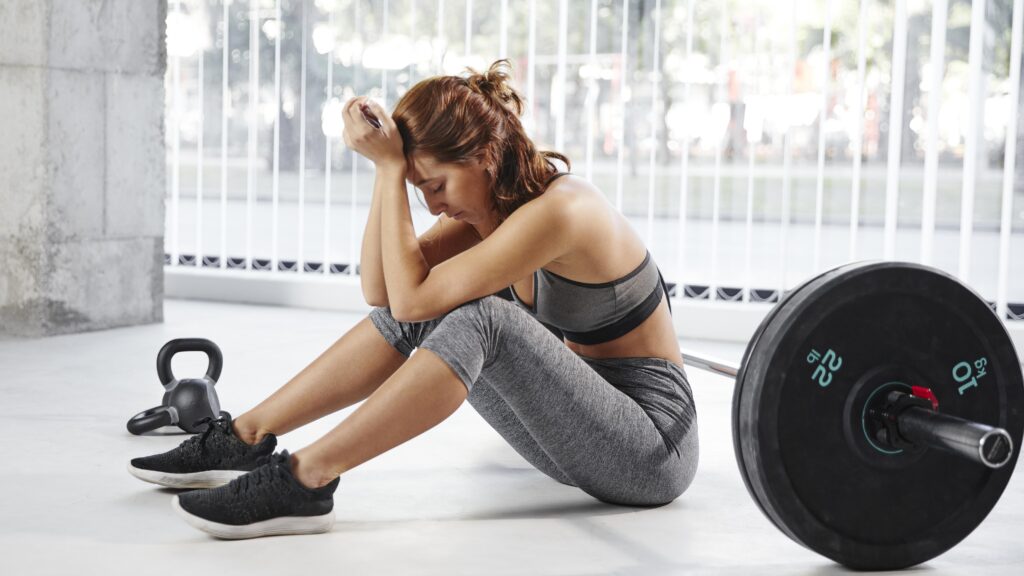Introduction
Tired of guessing how hard you should push during your workouts? The Repetitions in Reserve-based Rating of Perceived Exertion (RIR-based RPE) scale offers a smarter way to measure training intensity without relying solely on percentages or max tests. Whether you’re aiming to build strength, gain muscle, or avoid burnout, this autoregulation tool helps tailor your effort to your performance on any given day. In this article, we’ll break down what the RIR-based RPE scale is, how to use it in your workouts, and why it’s quickly becoming a favorite among lifters and coaches looking for sustainable gains.
A Brief Review of the RIR Scale
To gain some additional insight into this particular scale I reviewed a few scientific research papers on this intriguing topic. Here’s a synopsis of one of those articles titled “Application of the Repetitions in Reserve-Based Rating of Perceived Exertion Scale for Resistance Training”:
The research article explores the Repetitions in Reserve-based Rating of Perceived Exertion (RIR-based RPE) scale and its application in resistance training. Traditional RPE scales, like the Borg scale, have been used for endurance training, but the RIR-based RPE is specifically tailored to strength training by estimating how many reps an individual believes they could perform before reaching failure.
The study highlights that the RIR-based RPE scale is a practical, autoregulatory tool that helps individuals and coaches gauge training intensity more accurately. It allows for individualized load adjustments, ensuring the desired training stimulus is achieved while avoiding overtraining. Evidence suggests that athletes and recreational lifters can reliably estimate RIR after adequate familiarization, and RIR-based RPE scores correlate well with actual performance measures such as bar velocity and repetition failure.
Additionally, the article discusses the RIR-based RPE scale’s benefits for program design, fatigue management, and progressive overload, making it valuable for both hypertrophy and strength-focused programs. However, the effectiveness of this scale may vary depending on the trainee’s experience level, and ongoing education and feedback may enhance its accuracy.
Here is What the RIR Scale Actually Look Like
RIR-Based RPE Scale
| RPE | Repetitions in Reserve (RIR) | Description |
|---|---|---|
| 10 | 0 RIR | Max effort — no reps left, absolute failure |
| 9.5 | 0–1 RIR | Could maybe do 1 more rep, but unsure |
| 9 | 1 RIR | Definitely one rep left in the tank |
| 8.5 | 1–2 RIR | Could do one more rep, maybe two |
| 8 | 2 RIR | Two solid reps left before failure |
| 7.5 | 2–3 RIR | Could do two, maybe three more reps |
| 7 | 3 RIR | Three reps away from failure — moderate effort |
| 6.5 | 3–4 RIR | Very manageable, light to moderate effort |
| 6 | 4+ RIR | Easy — warm-up or active recovery sets |
| <6 | 5+ RIR | Far from failure — typically warm-ups or skill work |
Here is How to Use the Scale in Training
The RIR-Based RPE Scale, basically translates Rating of Perceived Exertion (RPE) into the number of Repetitions in Reserve (RIR). This method helps lifters gauge how close they are to failure on a given set—making it highly practical for auto-regulating intensity in resistance training.
- Use RPE 7–9 (RIR 3–1) for most working sets.
- Use RPE 6–7 for deloads, warm-ups, or low-stress days.
- Avoid RPE 10 often unless testing on max. lifts or in advanced training blocks.
Adding RIR Scale into a Training Program
Interested in seeing an an example of a 4-week resistance training plan using the RIR-based RPE scale as a method to regulate intensity?This plan is ideal for intermediate lifters aiming to build overall strength and muscle while avoiding overtraining.

Goal: Strength & Hypertrophy
Duration: 4 Weeks
Method: RIR-Based RPE (e.g., RPE 7 = 3 reps in reserve)
Weekly Split Example (full-body focused)
- Day 1 – Upper Body Push (Chest/Shoulders/Triceps)
- Day 2 – Lower Body (Quads/Glutes/Hamstrings)
- Day 3 – Rest or Active Recovery
- Day 4 – Upper Body Pull (Back/Biceps)
- Day 5 – Lower Body + Core
- Day 6 – Optional Conditioning or Mobility
- Day 7 – Rest
Progression & RIR Guidelines (per week)
| Week | RIR Target | Approx. RPE |
|---|---|---|
| 1 | 3–4 RIR | RPE 6–7 |
| 2 | 2–3 RIR | RPE 7–8 |
| 3 | 1–2 RIR | RPE 8–9 |
| 4 | 3–4 RIR (Deload) | RPE 6–7 |
Example Workout (Day 1: Upper Body Push)
| Exercise | Sets | Reps | RIR-Based RPE | Notes |
|---|---|---|---|---|
| Barbell Bench Press | 4 | 6 | RPE 7–8 | Leave 2–3 reps in the tank |
| Dumbbell Shoulder Press | 3 | 8 | RPE 8 | Moderate effort |
| Incline Dumbbell Press | 3 | 10 | RPE 7 | Use a slightly lighter load |
| Lateral Raises | 3 | 12–15 | RPE 6–7 | Focus on form |
| Triceps Rope Pushdown | 3 | 12 | RPE 7–8 | Controlled tempo |
Notes on Implementation:
- Autoregulation: Adjust loads each session based on how you feel—if a weight feels too light or heavy for the target RIR, modify accordingly.
- Feedback Loop: Track actual reps left vs perceived. Use bar speed (if measurable) and video feedback to improve accuracy.
- Fatigue Management: Lower RIR (higher RPE) in Week 3 should be followed by a deload in Week 4.
- Rest Between Sets: 90–180 seconds for compound lifts, 30–60 seconds for isolation exercises.
Final Thoughts
The RIR-based RPE scale is a powerful tool that brings precision, flexibility, and personalization to resistance training. By learning to gauge how many reps you have left in the tank, you can optimize workout intensity, prevent overtraining, and promote consistent progress. Whether you’re training for strength, size, or endurance, incorporating this method can help you lift smarter – not just harder. Start using the RIR-based RPE scale today to take full control of your workouts and results.
Jefit: Embrace the Grind
If you’re serious about building muscle, tracking workouts, and reaching your fitness goals in 2025, the Jefit strength training app is the perfect tool to help you succeed. With over 20 million downloads and 12+ million users, Jefit is one of the best tracking apps for strength training. Recognized as the Best Fitness App of 2024 and featured in Men’s Health, PC Magazine, and USA TODAY, Jefit stands out with its user-friendly design, advanced workout tracking, and over 42,000 five-star ratings. Whether your goal is to gain strength, track progress, or optimize protein intake, Jefit has everything you need. Remember, sustainable progress is built on consistency, science, and patience.
References
Zourdos MC, Klemp A, Dolan C, Quiles JM, Schau KA, Jo E, Helms E, Esgro B, Duncan S, Garcia Merino S, Blanco R. (2016). Novel resistance training-specific rating of perceived exertion scale measuring repetitions in reserve. J Strength Cond Res. 30(1):267–75.
Helms, E. R., Cronin, J., Storey, A., & Zourdos, M. C. (2016). Application of the repetitions in reserve-based rating of perceived exertion scale for resistance training. Strength and Conditioning Journal, 38(4), 42–49.
- The New Rules of Strength Training in 2026 - December 24, 2025
- Fibermaxxing: Viral Nutrition Trend You Should Know - December 17, 2025
- Hybrid Metabolic Strength Training for Faster Results - December 10, 2025
